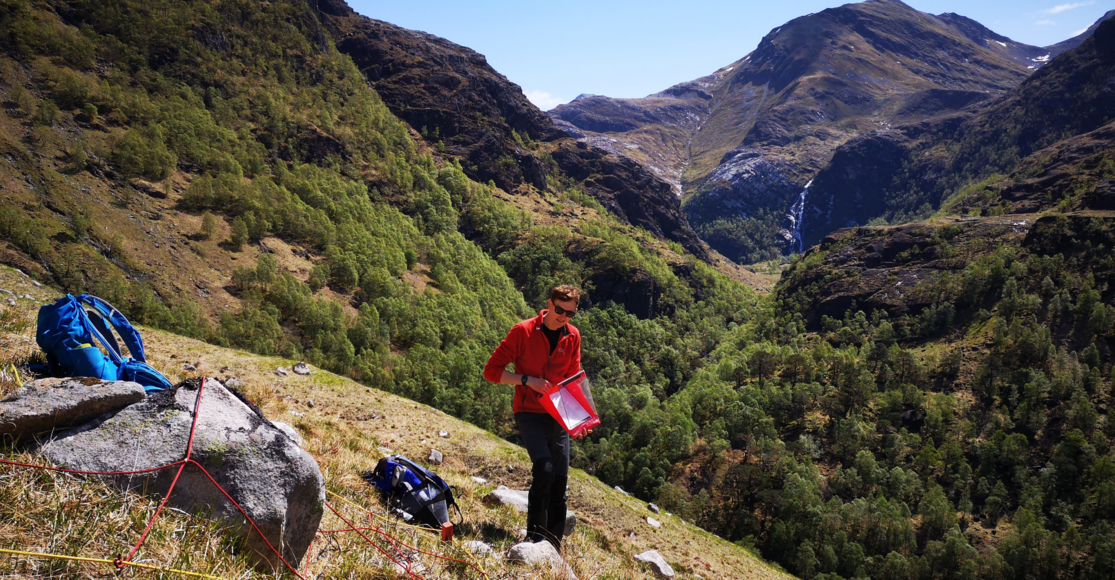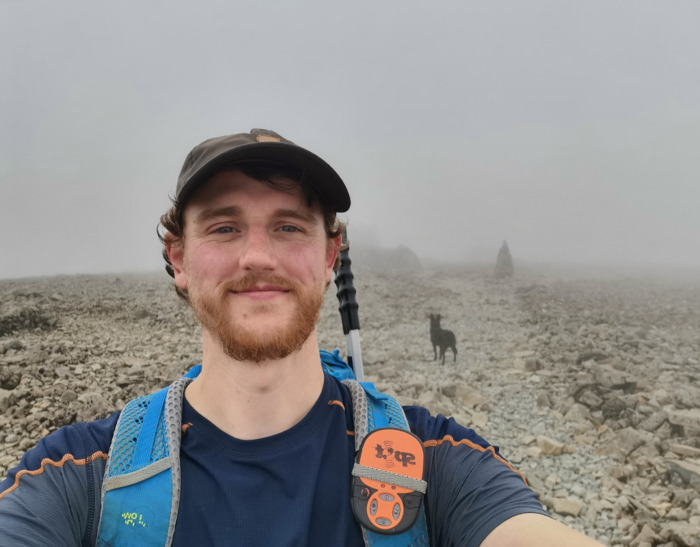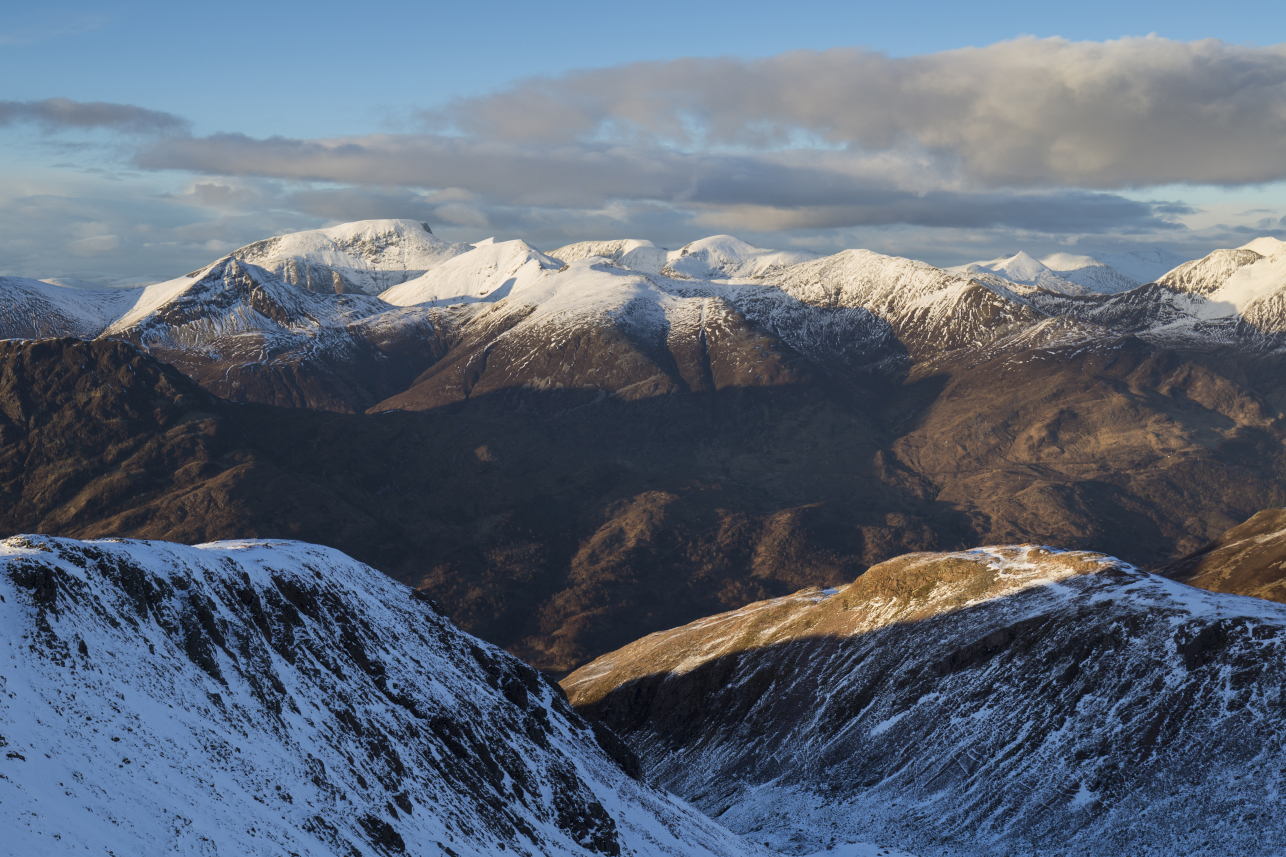School of rock
Rich Rowe chats with Nathan Berrie about his journey from local lad who barely noticed Ben Nevis to his role today caring for one of Scotland’s most treasured landscapes

Usually, teachers take a dim view of pupils staring out of the window during their lessons, but Neil Adams, a geography teacher at Lochaber High School, Fort William, actively encouraged it. Rather than relying just on textbooks when teaching the complexities of how landforms were shaped by the elements, he would point outside at the brooding shape of Ben Nevis to help explain.
Having the UK’s highest mountain as a teaching prop is a luxury available to few. And it was this direct line from school desk to mountain that had a profound impact on Nathan Berrie – a pupil at the school in the mid-2000s and now the John Muir Trust’s Nevis Conservation Officer.
“Many locals will know Mr Adams,” explains Nathan. “He really inspired me to understand the outdoors. The way the classroom was situated, we could look out the window and see a corrie for ourselves. I always thought that was pretty special.”
But in truth, Ben Nevis has not always dominated Nathan’s view. “Growing up here, I took the hills and nature for granted,” he admits. “I didn’t really think about the Ben – it was just something that was there. Visitors today can’t comprehend how that could be possible!”
It was only when he climbed the Ben for the first time in his teens that this storied mountain began to seep into his consciousness. “When I was 13, my mum took me on a sponsored walk to raise money for a football pitch near my house,” he explains. “I couldn’t see a thing the whole way up, it was just cloud.”
Home and away
For Nathan, really seeing would come much later – and following time spent away. He left Fort William at 18, first to study environmental geography at Stirling University and then to Edinburgh to find work following graduation. But with the available jobs inside and desk-bound rather than outside and hands-on as he had enjoyed during his studies, Nathan decided to travel instead.
While exploring the world, one specific experience – working as a lava cave guide at Vidgelmir in Iceland – proved to be a lightbulb moment. “Not only did I get to explore one of the largest lava caves in Europe, but I also learnt how to interact with people from around the world,” he remembers. “It really sparked an interest in working with people in conservation.”
Returning from his travels richer in experience if not bank balance, Nathan moved back to Fort William to live with his parents. He soon discovered that much had happened in his hometown in the seven years since he had been away, including the rapid development of the School of Adventure Studies at the University of the Highlands and Islands’ (UHI).
Nathan signed up for a masters in ecotourism and began to form plans for a career in land management. While studying, he started to volunteer with the Nevis Landscape Partnership, which in turn brought him into contact with the John Muir Trust for the first time – and caring for a place where he used to play as a child. “I was able to reacquaint myself with the glen,” he says. “I think that was the most fantastic part.”
In spring 2017, just as Nathan’s studies at UHI came to an end, the rekindling of his relationship with the glen was confirmed when he secured a post as a part-time seasonal ranger with the John Muir Trust. “It was almost too good to be true,” he explains. “Incredibly varied, the role really fitted my education up to that point, from a geography-focused degree to a more human-focused masters.”
And it got better still. Just six months later, with funding from the ALA Green Charitable Trust, he had an opportunity to do something that is notoriously difficult in the conservation sector: turn a part-time, temporary post into a full-time, permanent position.
The funded post came with a training budget so offered a real career development opportunity. “I feel like I’ve grown as an individual and the knowledge gained has really set up me up for my wider career,” says Nathan.

^ Nathan on the summit of Ben Nevis after the first lockdown ended.
Trust life
Like many locals, Nathan admits that when he first started working for the John Muir Trust, he knew relatively little about its work. That is why part of his mission today is to raise awareness of what the Trust does at Nevis and encourage more locals to get involved in caring for the land.
But what does a typical working week look like if there is such a thing? “There isn’t really,” smiles Nathan, who says that his job description would probably cover several sheets of paper.
In a way, the role is split by season. In spring and summer, the focus is on visitor management, plus the monitoring of various habitats throughout the glen. “In May, we look at the condition of a variety of shrubs and trees, which then steers our approach to managing deer numbers,” he explains.
There is also another important part of the job: being chatty. From hosting visits by university, college and school groups to simply speaking with as many people as possible while out on the hill, every opportunity is taken to spread the word about the work done at Nevis – be it habitat monitoring, woodland restoration, litter picking, or footpath maintenance.
In winter, there are fewer visitors and attention instead turns to hands-on deer management, assisting stalkers to achieve cull targets determined the previous summer. “Our deer management is led by the condition of habitat, not by deer numbers,” says Nathan.
But there is other engagement too, from running wild poetry competitions with local schools to involvement in the annual Fort William Mountain Festival.
Making a difference
But the John Muir Trust has a particular challenge at Nevis. The management techniques used are not hugely tangible, so the work can be hard to grasp – and explain. Rather than extensive tree planting or erecting of deer fences, much of the work involves a more philosophical approach to land management – one that relieves the pressure and lets the land express itself.
“It’s a harder message to get across, but I find it very satisfying to think that, if we are getting this right, I can come back in 30 years’ time and really see a difference in the landscape,” comments Nathan.
And, as ever, it is people who will make that difference; when people care about a place, they are more likely to then care for a place. “It has been a privilege to look after somewhere that I grew up and I’d like to encourage others to appreciate a landscape that we all benefit from,” says Nathan.
“Ben Nevis is connected to everyone’s lives here – it is the golden thread that holds the community together and enables it to flourish. It is so important that we all care for it.”
A wild moment
In April 2017, just before taking up his post at the John Muir Trust, Nathan Berrie had one of those moments that stick forever in the mind – and one that revealed just how powerful wild places can be.
“I was driving from Torlundy to Fort William on a bluebird winter’s day and suddenly caught a glimpse of the north face of the Ben in full alpine condition,” he recalls. “It was only for a second, but I was completely dumbstruck and had to pull over for a moment to take it all in.
“It was probably the closest to the sublime I’d witnessed in my life. It was an unusual feeling, and one that I’ve not experienced again since.”
- Learn more about our work at Nevis
- Read our Nevis supplement
